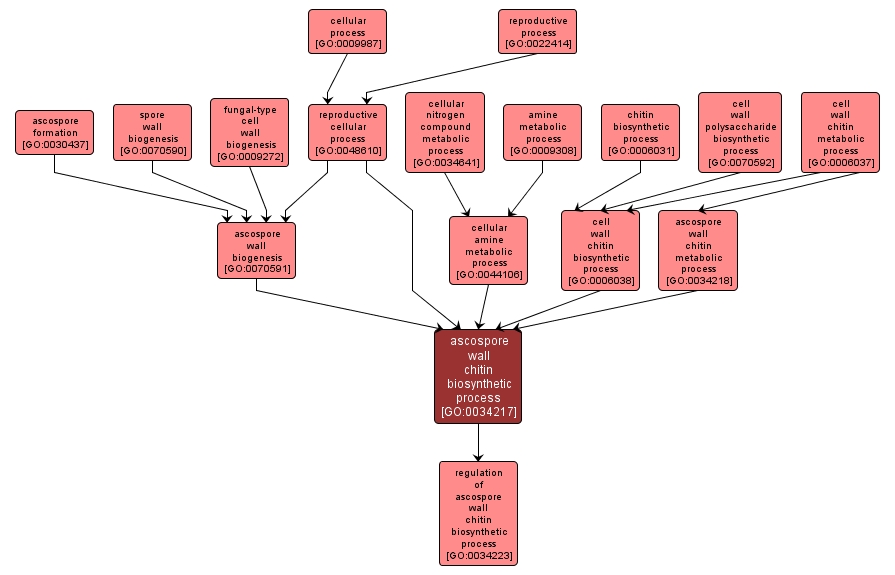GO TERM SUMMARY
|
| Name: |
ascospore wall chitin biosynthetic process |
| Acc: |
GO:0034217 |
| Aspect: |
Biological Process |
| Desc: |
The chemical reactions and pathways resulting in the formation of ascospore wall chitin, a linear polysaccharide consisting of P-1,4-linked N-acetyl-D-glucosamine residues, found in the walls of ascospores. |
Synonyms:
- ascospore wall chitin synthesis
- ascospore wall chitin anabolism
- ascospore wall chitin formation
- ascospore wall chitin biosynthesis
|
|

|
INTERACTIVE GO GRAPH
|














